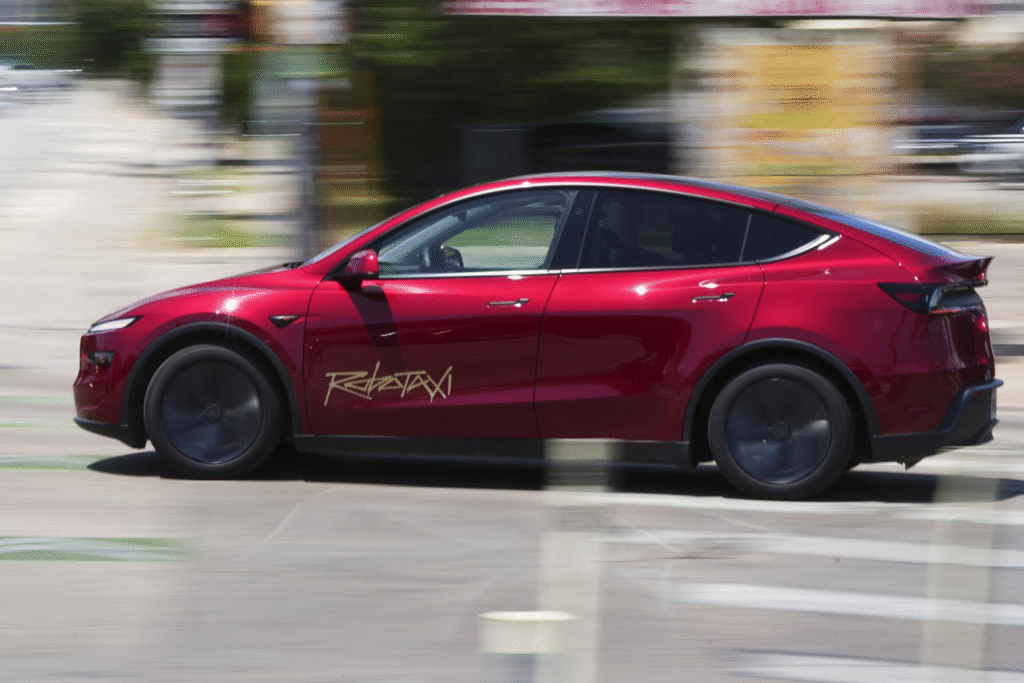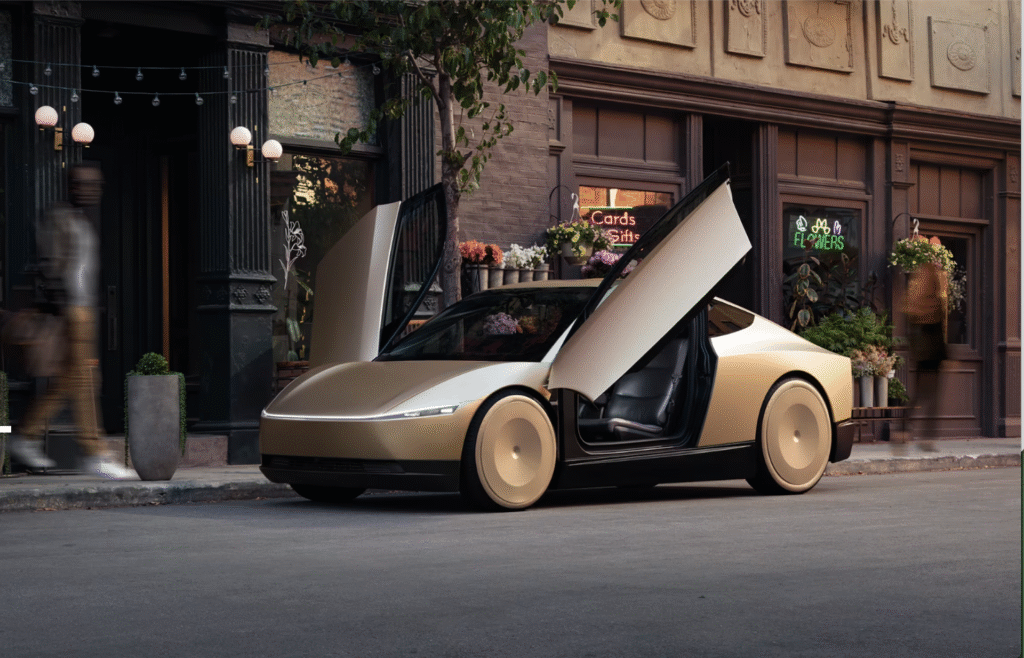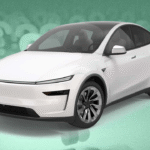The way people travel is changing fast. One of the most exciting technologies in the transportation world today is the RoboTaxi—a driverless taxi that can pick you up and drop you off without a human driver. Companies like Tesla, Waymo, Baidu, and even Indian startups are working to bring this futuristic idea into reality.
In this article, let’s understand what RoboTaxis are, how they work, where they are being used, and how they can change the way we travel in the future.
Table of Contents
🚖 What is a RoboTaxi?
A RoboTaxi (also called autonomous taxi or driverless cab) is a self-driving vehicle that can transport passengers without a human driver. It uses advanced technologies like:
- Artificial Intelligence (AI)
- Lidar sensors
- Radar systems
- High-definition cameras
- Real-time GPS navigation
All these tools work together to help the car “see” its surroundings, make driving decisions, and safely take passengers to their destination—just like a human driver would.

🔧 How Does a RoboTaxi Work?
A RoboTaxi depends on a combination of software and hardware:
- Sensors and Cameras: These detect pedestrians, vehicles, traffic lights, road signs, and obstacles.
- Lidar & Radar: These technologies create a 3D map of the car’s surroundings to track distance and movement.
- AI Algorithms: The vehicle’s brain. It processes all sensor data in real-time and decides how to steer, brake, or accelerate.
- HD Maps & GPS: Helps the RoboTaxi understand its exact location and the best route to take.
- Control Systems: These are responsible for handling the vehicle’s movements such as steering, acceleration, and braking.
Passengers usually book RoboTaxis through a mobile app, just like they would call an Ola or Uber cab.
🌍 Where Are RoboTaxis Being Tested?
Several cities around the world are already testing RoboTaxis on their roads:
- Waymo (a Google-owned company) runs RoboTaxi services in Phoenix, Arizona (USA).
- Tesla is working on Full Self-Driving (FSD) software to introduce RoboTaxis globally.
- Baidu and AutoX are testing RoboTaxis in China.
- Cruise (a GM-backed company) is running driverless rides in San Francisco.
Even India has startups exploring RoboTaxi concepts for future urban mobility, although large-scale testing has not yet started here.
🚦 Benefits of RoboTaxis
- Cost-Efficient: No driver salaries, leading to cheaper ride costs for passengers.
- 24/7 Service: RoboTaxis don’t need rest, so they can operate around the clock.
- Reduced Traffic Accidents: Advanced AI reduces human errors, which cause 90% of road accidents.
- Eco-Friendly: Most RoboTaxis are electric vehicles (EVs), contributing to cleaner air and reduced carbon footprint.
- Less Traffic Congestion: RoboTaxis can communicate with each other, improving traffic flow and reducing jams.
⚠️ Challenges and Concerns
While RoboTaxis are exciting, they still face some big challenges:
- Regulation & Laws: Many countries, including India, don’t have clear laws for driverless vehicles yet.
- Safety Concerns: AI is still not perfect in handling complex or unpredictable road situations.
- Job Loss: Widespread RoboTaxi adoption could impact jobs for traditional taxi and auto-rickshaw drivers.
- Cost of Technology: RoboTaxi systems are expensive to develop and maintain.
- Public Trust: Many people still feel unsafe or uncomfortable riding in a car without a driver.
READ ALSO : How Tata Motors’ ₹44,000 Crore Plan Will Transform India’s Auto Industry

🚗 When Will RoboTaxis Come to India?
In India, RoboTaxis are still in early research and development stages. However, experts believe:
- Initial RoboTaxi trials could start in controlled environments (like campuses or tech parks) by 2027-2028.
- Full-scale city operations may take until 2030 or beyond, depending on government approvals and infrastructure readiness.
Companies like Tata Motors, Mahindra Electric, and Ola Electric are keeping a close watch on global RoboTaxi developments and could join this race soon.
💡 How RoboTaxis Can Change India’s Cities
If successfully adopted, RoboTaxis can revolutionize urban mobility in India:
- Reduced air pollution with electric fleets.
- Lower traffic congestion through efficient route optimization.
- Affordable travel options for middle-class families.
- Improved road safety and reduced accident rates.
📢 Conclusion: RoboTaxis Are Closer Than You Think
The dream of hopping into a car that drives itself is no longer science fiction. RoboTaxis are already a reality in some parts of the world, and India could see them in the next decade. While there are still hurdles to cross—like laws, infrastructure, and public acceptance—the future of driverless cabs looks bright.
For now, RoboTaxis are a technology to watch closely, as they promise to redefine how we move in our cities.










